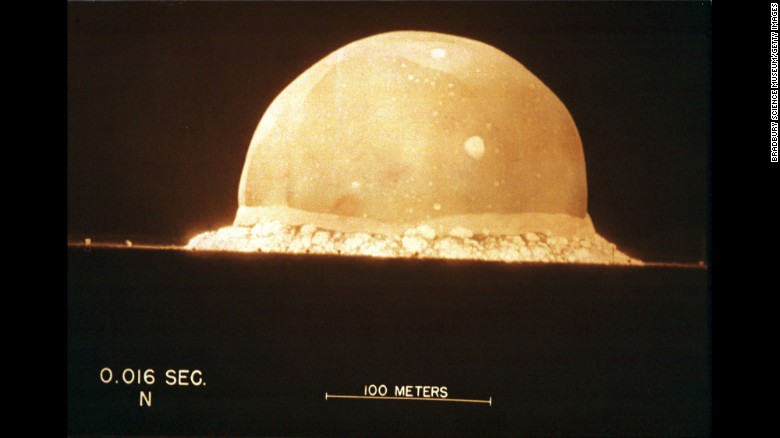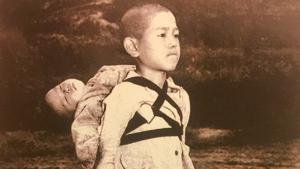'The fruit of war': Pope Francis prints photo of Nagasaki victims
(CNN)Pope Francis is having cards printed and distributed showing a 1945 photo of victims of the nuclear bombing of Nagasaki along with the words "the fruit of war."
The photo captures a boy carrying his dead brother on his shoulders while he waits for his turn at the crematory. It was taken by US Marine photographer Joe O'Donnell shortly after the bombs were dropped at the end of World War II.
The leader of the world's Roman Catholics asked that "the fruit of war" be written in the back of the card along with his signature "Franciscus."
A short caption explains the content and origin of the photo, it reads in part: "The young boy's sadness is expressed only in his gesture of biting his lips which are oozing blood."

The Pope's signature is above a description of the image.
After the bombs dropped by the US on Nagasaki and Hiroshima forced Japan's surrender and ended World War II in 1945, O'Donnell spent four years documenting the aftermath in the two cities, according to Library of Congress records.
Photos: The first use of the atomic bomb
U.S. President Harry Truman, aboard a U.S. Navy cruiser, reads reports of the Hiroshima bombing. Eight days earlier, Truman had warned Japan that the country would be destroyed if it did not surrender unconditionally.
Hide Caption
10 of 19
Photos: The first use of the atomic bomb
A white silhouette on a Hiroshima bridge shows an area that wasn't scorched by the bomb. It was reportedly the outline of a person's shadow -- someone who was shielded from the blast's heat rays by another person.
Hide Caption
11 of 19
Photos: The first use of the atomic bomb
An elderly victim is covered with flies in a makeshift hospital in Hiroshima.
Hide Caption
12 of 19
Photos: The first use of the atomic bomb
A worker stands next to an atomic bomb, nicknamed "Fat Man," hours before it was dropped on Nagasaki, Japan, on August 9, 1945.
Hide Caption
13 of 19
Photos: The first use of the atomic bomb
This photo was taken about six miles from the scene of the Nagasaki explosion. According to the Nagasaki Atomic Bomb Museum, photographer Hiromichi Matsuda took this photograph 15 minutes after the attack.
Hide Caption
14 of 19
Photos: The first use of the atomic bomb
Survivors of the Nagasaki bomb walk through the destruction as fire rages in the background.
Hide Caption
15 of 19
Photos: The first use of the atomic bomb
A woman and a child walk in Nagasaki on the day of the bombing. More than 70,000 people there were killed instantly.
Hide Caption
16 of 19
Photos: The first use of the atomic bomb
Members of the White House Press Corps rush to telephones after Truman announced Japan's surrender on August 15, 1945.
Hide Caption
17 of 19
Photos: The first use of the atomic bomb
An aerial view of Hiroshima three weeks after the atomic bomb.
Hide Caption
18 of 19
Photos: The first use of the atomic bomb
Soldiers and sailors on the USS Missouri watch as Japan's formal surrender is signed in Tokyo Bay on September 2, 1945.
Hide Caption
19 of 19

Photos: The first use of the atomic bomb
The United States detonates the world's first atomic bomb at a test site in New Mexico on July 16, 1945. Less than a month later, atomic bombs were dropped on the Japanese cities of Hiroshima and Nagasaki. The devastation led to Japan's unconditional surrender and brought an end to World War II.











